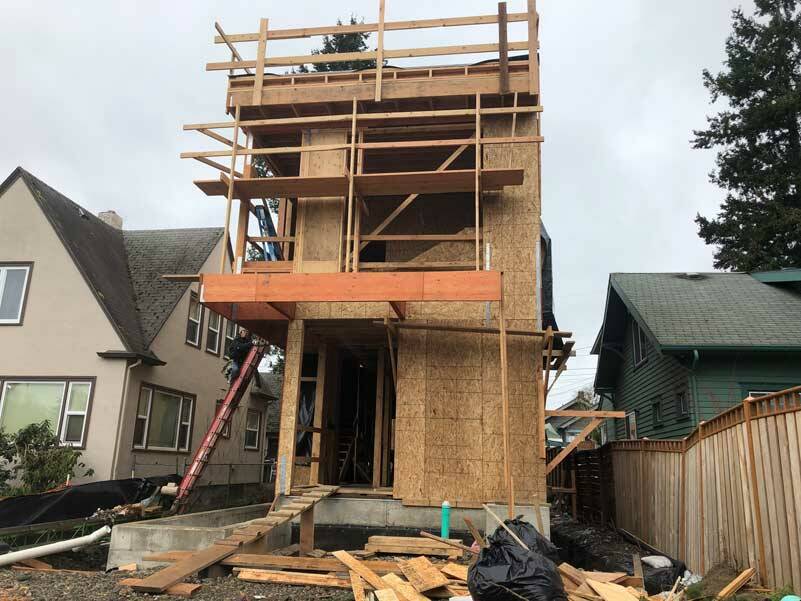By Morf Morford
Tacoma Daily Index
Real estate is many things; for some it is a livelihood, for some it is an investment and for some it is literally where we live.
For builders and contractors, real estate is a project. For those of us who inhabit our real estate, it is our largest investment of our lives.
A generation or two ago, a newly married couple might buy a starter home – a smallish, affordable house.
Temporary housing, as in 2-3 year military deployments, presumed renting.
Condominiums, a quasi-compromise between apartment and single-family housing emerged as a housing option in the early 1980s.
Construction of every kind of housing takes time. A condominium or apartment project can take many years from planning to full occupancy. A single-family home can take a year or two – if everything goes smoothly.
In other words, the economic dynamics of the larger economy – and certainly builders, contractors and potential owners can (and often does) dramatically change from the time plans are drawn to the time occupants can move in.
Interest rates, material costs (or availability) and health, financial or marital status of the potential owners/purchasers can change, detour or even disrupt the best laid building plans.
Many fortunes have been made in real estate.
But almost as many have been lost.
The wheel keeps turning
There are four semi-reliable stages or seasons of real estate: recovery, expansion, hyper-supply, and recession. As with terrestrial seasons, there has never been a sustained expansion or hyper-supply period without an eventual recession, followed by recovery. Followed by yet another round of expansion, hyper-supply, and recession.
Fine-tuning where one phase ends and another begins is, to put it mildly, the challenge.
Recovery
Identifying the recovery phase of the cycle, for example, can be tricky, as most of the nation and economy will still be feeling the effects of a recession.
Early in a recovery is a great time to pounce on below-market value properties that are in various states of financial or physical distress.
A good policy early in a recovery is to wait out the rest of the recovery period by adding value to these properties so that they are ready to sell or rent outright as the economy gains its footing and moves into the next phase.
Expansion
Expansion is when the larger economy is improving, job growth is strong, and there is an increased demand for space and housing.
Construction projects (and building cranes) seem to be everywhere. Materials, skilled labor and property are in short supply. Contractors are booked and literally cannot build housing fast enough.
Which leads to the next phase…
Hyper-supply
As with every other product or hot trend, investors and developers work themselves into a frenzy during the expansion phase to ensure that supply meets a growing – seemingly endless – demand.
Inevitably, there will come a tipping point at which supply begins to exceed demand — either from too much inventory on the market or because of a sudden shift in the economy that constricts demand. This is the time to buy and hold, if you can, so that you have promising properties already in stock when recovery rolls around again.
Recession
But until recovery returns, supply exceeds demand by a wide margin, building projects falter and are left unfinished and rental property owners suffer from high vacancy rates. Not only is rent growth not present, some landlords are forced to offer reduced rental rates to attract (or keep) renters who are also suffering from the economic downturn.
If you have the resources, a recession provides the best opportunity to purchase distressed properties at a deep discount.
Seasons
The average real estate cycle lasts about 18 years.
That’s about four years per phase – but some phases last (or at least seem to last) much longer.
And, there’s nothing predictable about “average”.
In general though, there are some solid strategies for making the best of these situations.
In summary;
In times of recovery: focus on rehabbing, buying and holding, and if possible, multifamily investments.
In times of expansion: buy and hold, look into multifamily and commercial acquisitions
In times of hyper-supply: Buy and hold. Demand will return eventually.
And in times of recession: private and hard money lending, investing in foreclosures and bank-owned homes.
Serendipitous factors
As some of us are learning, the real estate market is about more than materials, labor, land costs and interest rates. Demographics underlie markets of all kinds – perhaps real estate most of all.
A major generation tilts every market it touches. Great demand for “starter homes” inevitably leads to downsizing, which also, inevitability leads to those homes being put back on the market – perhaps all, or mostly, at once.
Another semi-unpredictable factor is the government.
The government will occasionally intervene with policies to help boost a market that is particularly sluggish or in a prolonged recession.
Policy makers have the ability to implement tax deductions, subsidies, tax credits, and different home buyer programs to incentivize consumers to purchase real estate.
And, as we all know in the 2020s, pandemics can upend everything we thought we knew about every market.
Perhaps real estate most of all.
Making our way through these semi-predictable phases can make or break our net worth.
As always, preparation for what is coming next is the best defense.






